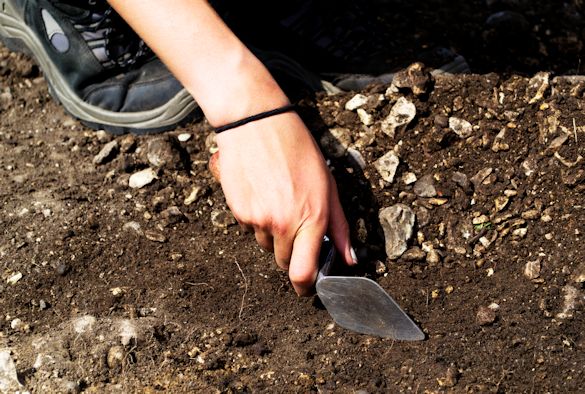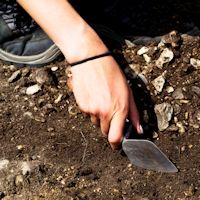
Scientists from the University of Liverpool are developing a new carbon dating technology that could revolutionise field archaeology.
In partnership with Norton Priory Museum & Gardens and supported by funding from the Arts Council England, they will develop a new technique which will make it quicker and easier to date archaeological finds.
Radiocarbon dating is used to determine the age of ancient objects by means of measuring the amount of carbon-14 remaining in a sample.
However it is an expensive process which takes place offsite and typically takes six weeks or more which means that an excavation is likely to be over before the important dating information can be obtained.
Mass spectometer
The new technology uses a quadrupole mass spectrometer (QMS) which will reduce the time it takes to obtain data for a bone sample to just two days.
Significantly the technology can also be utilised onsite, and this is the first time this has been attempted.
So far the technique has been has been used to analyse both medieval and post medieval bone samples provided by Norton Priory Museum & Gardens, the most excavated monastic site in Europe.
The initial results have been compared with the conventional methods and show encouraging levels of agreement.
Lifting the barriers
Professor Steve Taylor, from the University’s Department of Electrical Engineering and Electronics who is leading the project, said: “It will be a challenge to develop a portable instrument to achieve the required performance, but thanks to this funding we are in a strong position to make a real attempt.”
Frank Hargrave, Director of Norton Priory said: “The potential of this new technique is incalculable. Archaeologists will, for the first time, be able to make decisions onsite and within days of sampling.
“The expense and time consuming nature of conventional methods will also no longer be a barrier and it’s likely that many more samples will be able to be taken with significant benefits to the archaeological record.”
It is anticipated that the first new QMS unit of its type is will be commercially available for field trials by archaeologists in 2016.
The development is funded by the Art Council for England’s Museum Resilience Fund which supports museums to become more financially sustainable.
